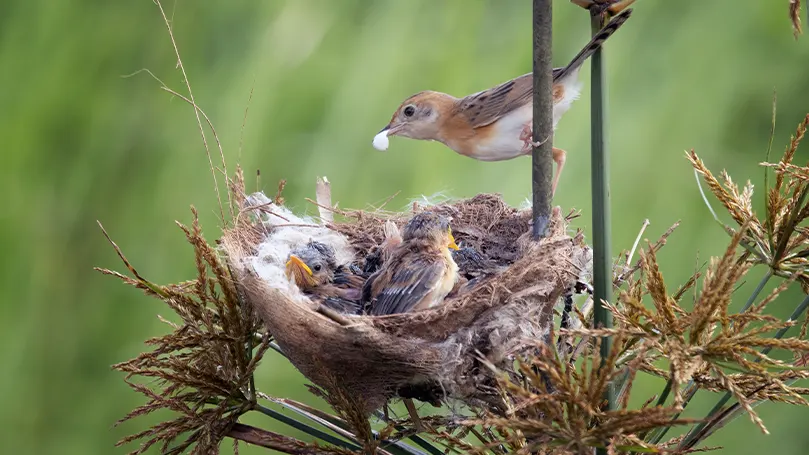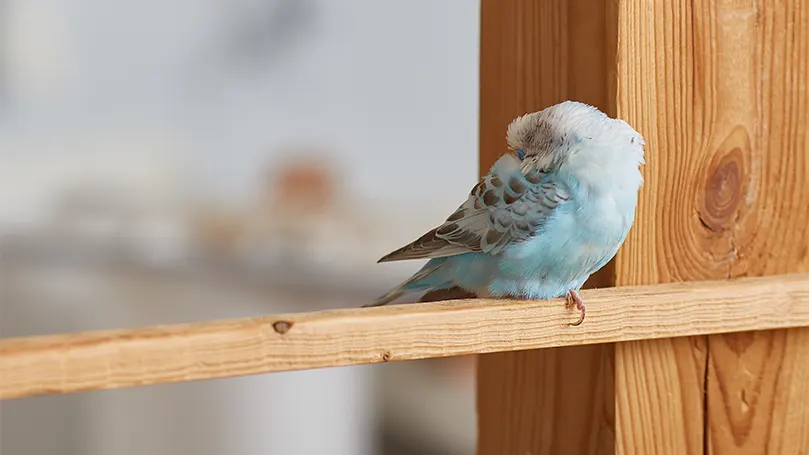
Today is World Migratory Bird Day and, in the spirit of it, let us tackle the issue of how do birds sleep.
Birds are fascinating creatures, known for their beautiful songs, colourful feathers, and graceful flight. But have you ever wondered how these feathered friends sleep? Do they sleep standing up or lying down? With one eye open or both eyes closed?
In this article, we'll explore the curious world of bird sleep and uncover some of the surprising ways in which our avian friends catch some sleep.
Table of Contents
Add a header to begin generating the table of contents
World Migratory Bird Day (WMBD) is a globally celebrated event that takes place annually on the second Saturday in May and October. The aim of the event is to raise awareness about the importance of migratory birds and their conservation.
The day was first initiated in 2006 by the Secretariat of the Convention on the Conservation of Migratory Species of Wild Animals (CMS) and the African-Eurasian Migratory Waterbird Agreement (AEWA) and has since been recognized by many countries and organizations around the world.

Each year, WMBD focuses on a different theme related to migratory birds, such as their role in ecosystems, their habitats, or the challenges they face during migration. The day is marked by a range of activities, including birdwatching events, seminars, and workshops, aimed at promoting awareness and education about migratory birds.
WMBD provides an opportunity for individuals, organizations, and governments to come together and work towards the conservation of these magnificent creatures, whose long journeys often span thousands of miles and connect countries and continents.
Have you ever wondered where birds sleep at night?
Well, it turns out that the answer to this question depends on what type of bird we're talking about!
Nocturnal birds, such as owls, are most active at night and will often sleep during the day in trees or other sheltered locations. Wading birds and waterfowl, like ducks, tend to sleep on the water or on the shore in large groups, for safety in numbers.
On the other hand, diurnal birds, such as hawks and eagles, are most active during the day and will often sleep at night in trees or other perches, using their talons to hold on tight. Perching birds, like sparrows and finches, also sleep in trees or shrubs, often in a group with other birds of the same species.
In fact, most birds sleep with their heads tucked under their wings, in order to keep warm and conserve energy.
So, whether it's in a tree, on the water, or even on the ground, birds have their own unique sleeping habits and preferences.
Next time you spot a feathered friend catching some Z's, take a moment to appreciate the amazing adaptations that allow them to rest and recharge for another day of flight and fancy.

Sleeping birds typically rest for several hours each night or day, but some birds, such as swifts, can sleep while they fly and only rest for a few minutes at a time.
Interestingly, bird experts have discovered that birds can sleep with one eye open and half of their brain awake, allowing them to stay alert to potential dangers while still getting some much-needed rest. This is known as unihemispheric slow-wave sleep and is a fascinating adaptation that allows birds to sleep while remaining vigilant.
Thus, while we might think of birds as always being on the move and never stopping to rest, the truth is that they need their sleep just like we do.
Birds might seem like they have it easy when it comes to sleeping, what with all their fancy feathers and lightweight bones. But the truth is, they face some unique challenges when it comes to catching some sleep.
For one, wild birds have to be constantly on the lookout for predators, so they need to be able to sleep in a way that keeps them safe. Some birds, like ducks and wading birds, tuck their beaks into their feathers and rest while standing on one leg. Others, like perching birds, sleep while perched on a branch or other high-up spot where they can keep an eye out for danger.
Baby birds have their own sleeping challenges, too. Nestlings often sleep with their heads tucked under their wings, while fledglings may sleep in a group with their siblings for added protection.
Migrating birds, on the other hand, face a different set of sleep issues. Many of these birds fly nonstop for days or even weeks at a time, catching brief naps in midair as they go. And even when they do land to rest, they still have to be on the lookout for predators and other animals that might try to steal their precious energy reserves.

In conclusion, birds are fascinating creatures with unique sleeping habits.
Whether it's a sleeping bird perched on a tree branch, wild birds snuggled in their nests, or migrating birds catching a snooze mid-flight, there is so much to learn about how they sleep.
And who knows, maybe birds dream too! It's just another reminder of how amazing the animal kingdom is and how much we can learn from them about the mysteries of sleep. So next time you catch a sleeping bird, take a moment to appreciate the wonder of the animal world and how all creatures, big and small, need to rest and rejuvenate.

